- Remittance
- Exchange Rate
- Stock
- Events
- EasyCard
- More
- Download
The three major US stock indexes hit new highs again, the Federal Reserve cut interest rates up the
In last Friday’s stock market trading, the three major stock indexes - the S & P 500, Nasdaq, and Dow Jones Industrial Average - closed in the red. The S & P 500 not only achieved its 45th new high of the year, but also broke through the integer mark of 5800 points for the first time. The Nasdaq and Dow Jones Average also closed up 0.33% and 0.97% respectively, with the latter once again setting a new historical record. This positive market performance has stimulated investors’ enthusiasm and made people think about how to better seize investment opportunities under current market conditions.
As is well known, “Stock God” Buffett has repeatedly mentioned in his shareholder letters that by regularly investing in index funds, ordinary investors can also obtain returns that exceed those of professional investors. This investment strategy is particularly suitable for ETFs that track major market indicators.
When it comes to the US stock market, most investors immediately think of three main market indicators: the S & P 500 Index, the Dow Jones Industries Average Index, and the Nasdaq Composite Index.
In addition to these three major indices, there is another market index that investors are very concerned about, which is the Russell 2000 Index. Today, let’s take a look at what it is and how to invest in related ETFs.
So what is the Russell 2000 index?
The Russell 2000 Index is compiled and maintained by the Russell Investment Group, focusing on 2000 companies with smaller market capitalizations. Unlike Blue Chips, which mainly track larger market capitalizations such as the S & P 500, it represents the performance of small and medium-sized companies in the US market. These companies are often emerging and growing enterprises with high growth potential, but also accompanied by high market volatility.
The Russell 2000 Index covers small-cap companies in multiple industries, providing a broad representation of economic sectors. Core constituent industries typically include:
- Finance : Banks, insurance companies, and other providers of Financial Services. These companies often performed well in the recovery phase of the US economy.
- Healthcare : companies in biotechnology, pharmaceuticals, medical devices, etc. The healthcare industry, especially in the field of biotechnology, is full of emerging companies that may bring significant growth in the short term due to technological breakthroughs.
- Industry : including manufacturing and construction, etc. These small industrial enterprises have considerable resilience and flexibility in innovation and efficiency.
- Information technology : includes software companies and hardware manufacturers. Information technology companies are one of the fastest growing segments of the index.
- Consumer goods : Covers consumer goods and service providers such as retail and catering. These companies directly serve consumers, so their performance can also reflect consumer confidence and consumption trends well.
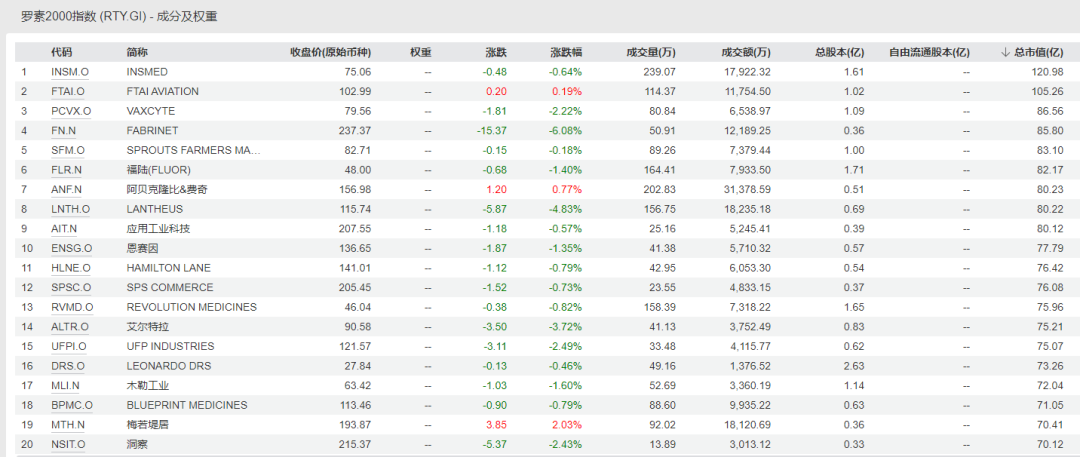
The Russell 2000 Index, as an important index for measuring small-cap companies in the US, can not only help investors identify and utilize growth opportunities for small companies, but also be used to evaluate overall market performance, especially during economic expansion and recovery stages. For investors seeking diversified investment portfolios and interested in small businesses, the Russell 2000 Index is undoubtedly an indispensable choice.
Russell 2000 Index ETF provides excellent solutions
Although the Russell 2000 Index has high investment value, investing directly in small-cap companies in the index can be both complex and costly for ordinary investors, as it involves selecting and managing a large number of stock holdings. In this case, choosing the Russell 2000 Index ETF has become a more efficient and convenient strategy, providing direct exposure to the broad small-cap stock index through a single financial product.
Why invest in the Russell 2000 Index ETF?
The Fed’s interest rate cut brings good news
Recently, the Federal Reserve announced a significant interest rate cut. This is undoubtedly a major benefit for small-cap companies. As small companies usually need to rely on borrowing to drive business expansion, the reduction in interest rates means that their borrowing costs are reduced, thus obtaining more opportunities for business investment and expansion. Historical data shows that when interest rates fall, small-cap companies often perform better than large companies because lower borrowing costs provide them with more growth opportunities.
The Russell 2000 Index ETF includes these small-cap companies that are expected to benefit from low interest rates, so it looks like a very good choice under current market conditions. By investing in these ETFs, investors can easily grasp the growth dividends of US small-cap companies and obtain potential additional returns.
It also has other investment advantages:
- The convenience of a basket of stocks : By purchasing the Russell 2000 Index ETF, investors can hold all constituent stocks in the index, eliminating the trouble of picking individual stocks, while achieving automatic investment diversification, thus effectively reducing risk.
- Seize growth opportunities : Small-cap companies tend to have high growth potential, especially during economic expansions. Investing in Russell 2000 ETFs can help investors capture the benefits of these companies’ growth.
- Save money and worry : Compared with buying multiple small-cap stocks separately, ETF greatly reduces transaction costs and management fees, and the trading method of ETF is as simple as ordinary stocks, saving time and effort.
- Flexible operation : ETFs are publicly traded on exchanges, and investors can buy and sell at any time like trading ordinary stocks, flexibly responding to market changes, which is very beneficial for investors who need to respond quickly to market trends.
The Russell 2000 Index ETF is suitable for the following types of investors:
- Investors looking for diversification : Individual or institutional investors looking for a simple way to diversify risk, the Russell 2000 Index ETF is an ideal choice.
- Growth-Driven Investors : Investors interested in tracking markets with high growth potential, especially those who have confidence in the growth of small businesses.
- Cost-sensitive investors : ETFs have lower management fees and are ideal for investors who want to invest in a wide range of markets at low cost.
- Strategic Investor : Investors who need a highly liquid financial instrument to respond quickly to market changes, the Russell 2000 Index ETF can meet this need.
How to invest in Russell 2000 Index ETFs
Which related ETFs are worth paying attention to?
Here are some common Russell 2000 ETFs for investors to trade:
- iShares Russell 2000 ETF (IWM)
This is one of the most popular ETFs tracking the Russell 2000 index, with good liquidity and transparent management fees, suitable for investors who want comprehensive small-cap market exposure.
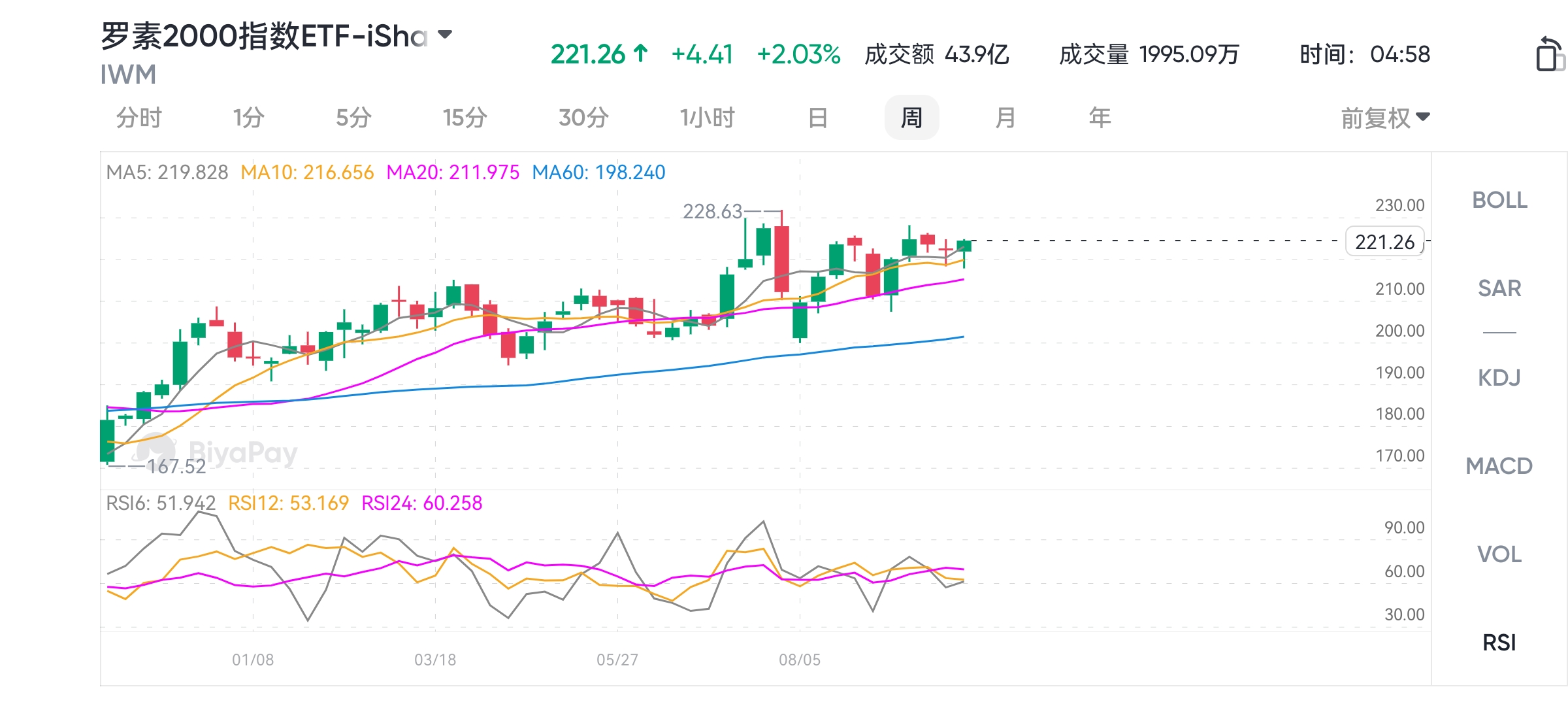
- Vanguard Russell 2000 ETF (VTWO)
It is offered by Vanguard, which is popular with investors for its lower management fees and is especially suitable for cost-sensitive investors.
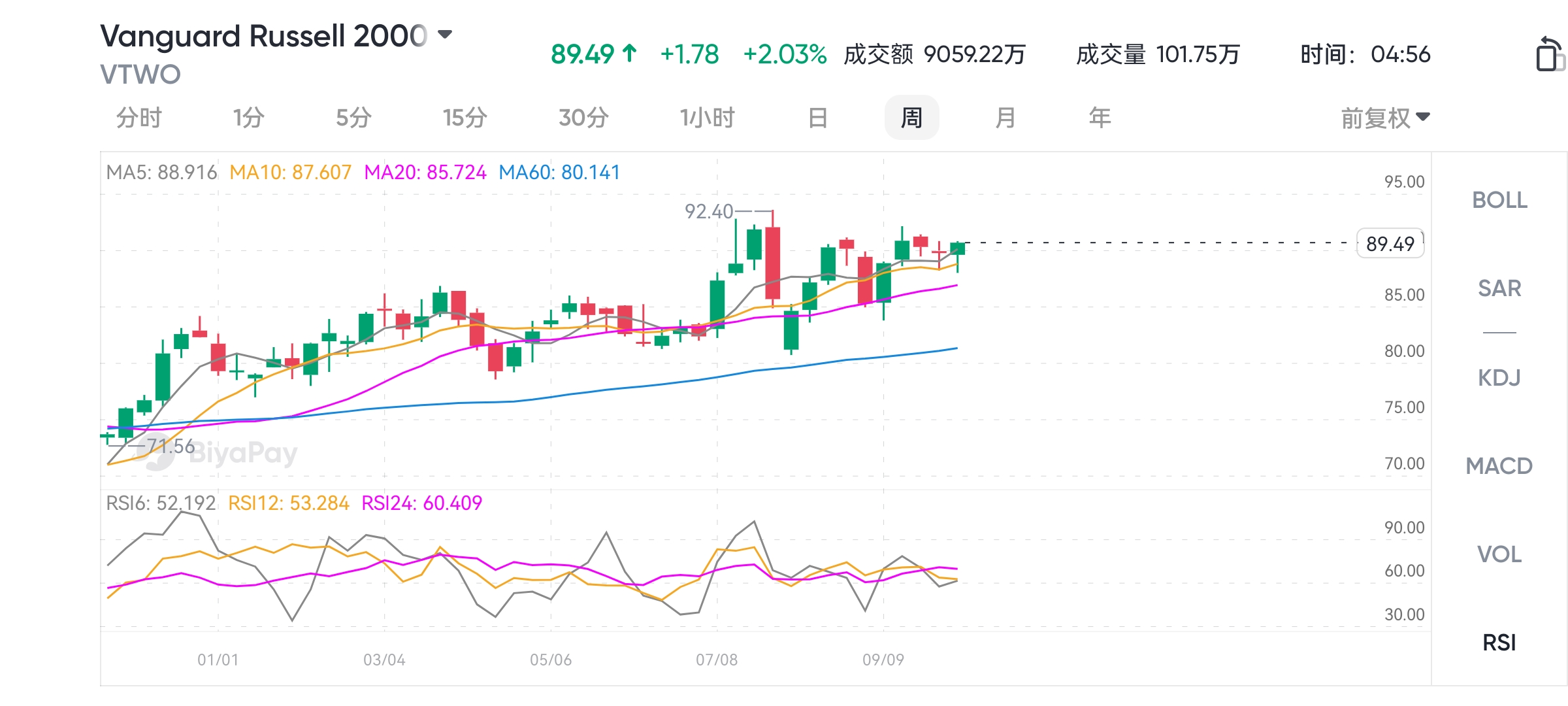
- ProShares Russell 2000 Dividend Growers ETF (SMDV)
This ETF focuses on small-cap company stocks with gradually increasing dividends in the Russell 2000 index, suitable for investors who want to obtain dividend income while investing in small-cap stocks. It increases the stability and defensiveness of the investment portfolio by selecting companies with stable dividend performance.
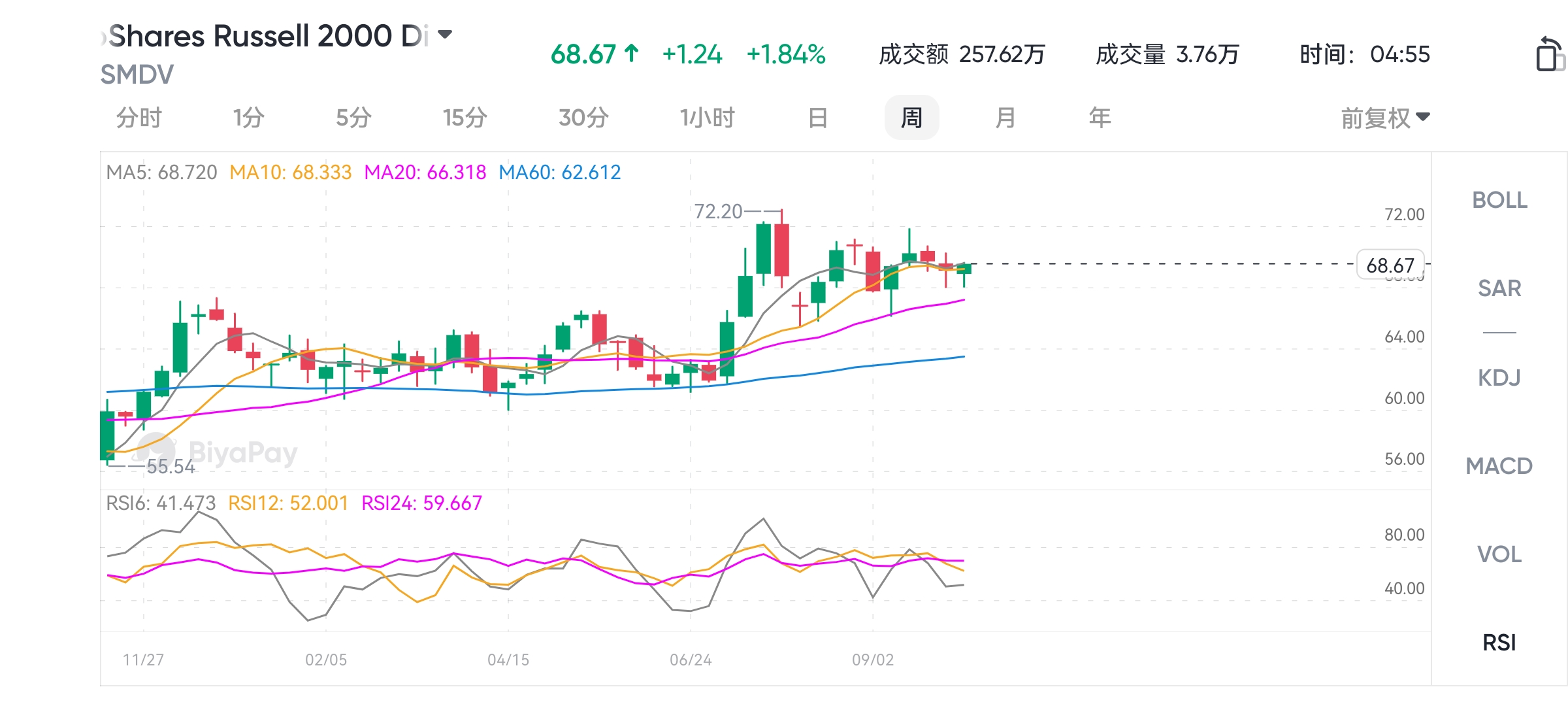
- iShares Russell 2000 Growth ETF (IWO)
This ETF focuses on the companies with the greatest growth potential in the Russell 2000 index and is suitable for investors who pursue high growth potential and are willing to take some risks.
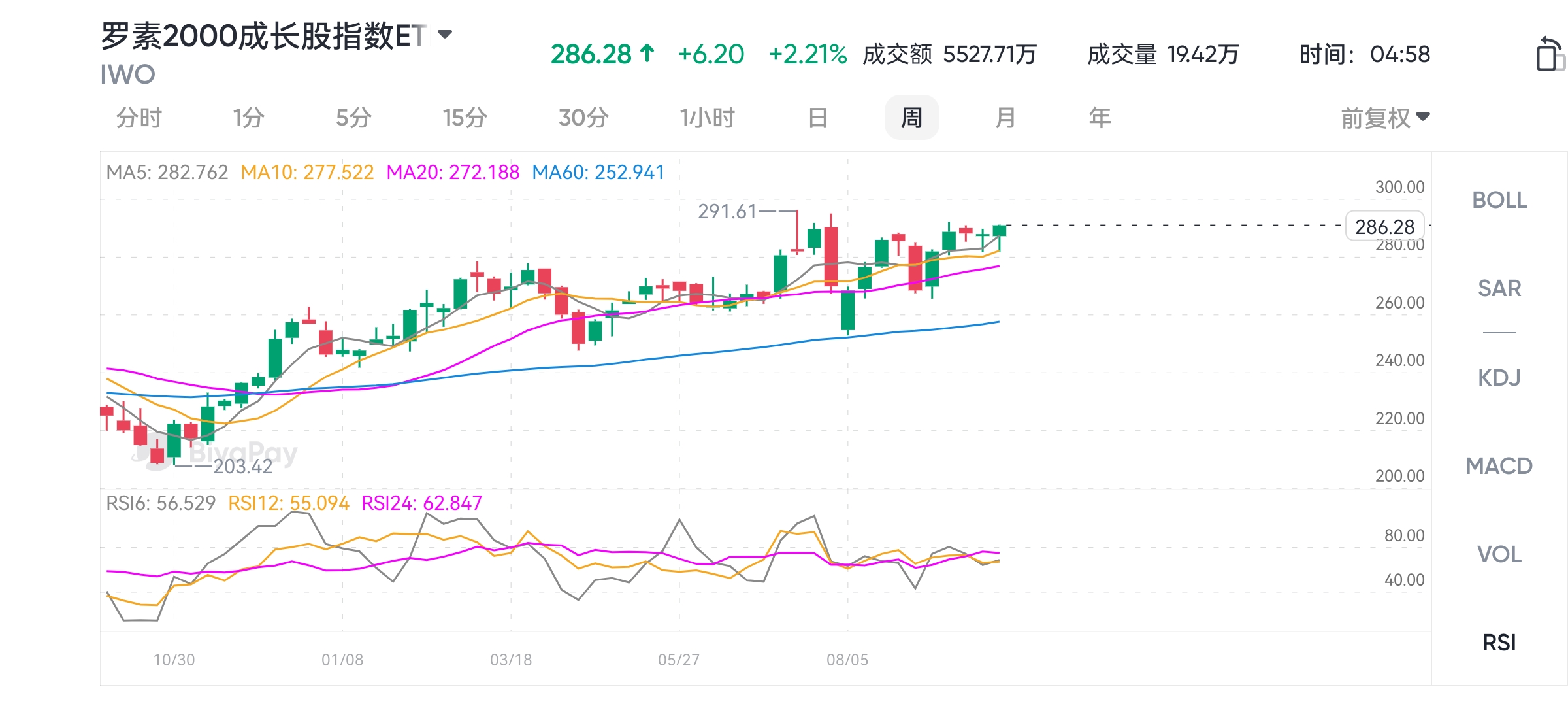
- iShares Russell 2000 Value ETF (IWN)
In contrast to IWO, IWN focuses on value stocks in the Russell 2000 index, covering small companies whose current stock prices are lower than their intrinsic value, and is suitable for investors who want to buy high-quality small-cap stocks at a lower price and make profits in the long term.
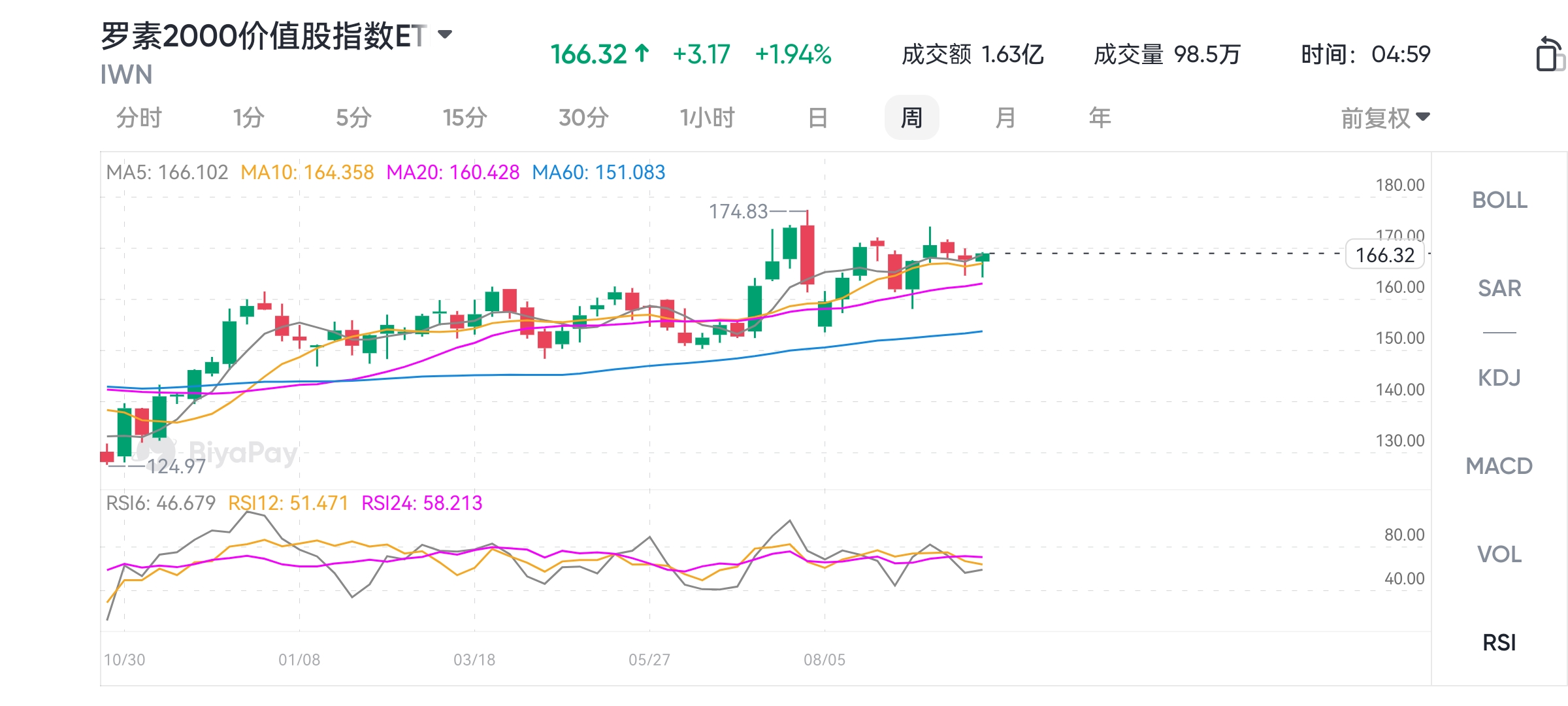
How to conduct investment transactions
Trading inevitably involves risks, so choosing the right platform is very important. Investors can trade through BiyaPay, a multi-asset trading platform. BiyaPay not only provides a rich selection of Russell 2000 Index ETF trading options, but also monitors the real-time market trends of related ETFs, helping you balance risks and returns in market fluctuations and choose the appropriate investment timing.
In addition, BiyaPay is also a professional tool for depositing and depositing US and Hong Kong stocks. It allows you to exchange digital currency for US dollars or Hong Kong dollars by recharging, and then withdraw it to a bank account for quick transfer to a brokerage account for investment. This can help you avoid missing market opportunities due to funding issues and efficiently allocate assets.
How to efficiently manage risks
Combining diversified investment with regular investment
When choosing the Russell 2000 Index ETF, investors should consider how to achieve diversification throughout the entire asset portfolio in order to effectively reduce the risks brought by a single asset class. Specifically, more comprehensive diversification can be achieved by combining other asset classes (such as large-cap stocks, bonds, etc.). At the same time, adopting a regular investment strategy (such as monthly investment) can help average costs and reduce investment risks caused by market fluctuations.
Pay attention to balancing high growth potential and volatility
Although the Russell 2000 Index ETF offers highly attractive growth potential, its high volatility may also bring significant investment risks. To effectively manage these risks, investors can adopt some strategies, such as setting stop-loss points, regularly rebalancing investment portfolios, and using derivatives to hedge downside risks. These measures will help to enjoy growth while reducing potential market volatility risks.
Overall, the Russell 2000 Index ETF provides investors with a convenient way to invest in US small-cap companies. Small-cap companies often perform well in the economic recovery phase and have high growth potential. Although investing in such ETFs carries volatility risks, reasonable risk management and diversified investment strategies can help reduce these risks. Investors who seek high growth potential and are willing to bear higher volatility, as well as long-term investors who hope to diversify their investments through risk diversification, can focus on relevant ETFs.

























